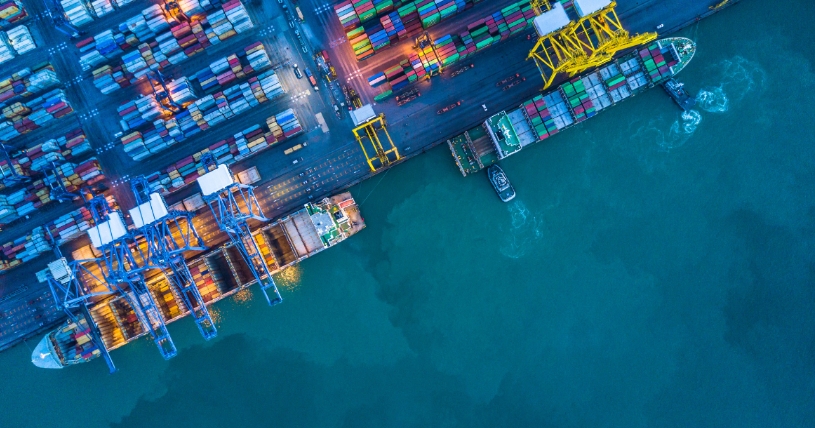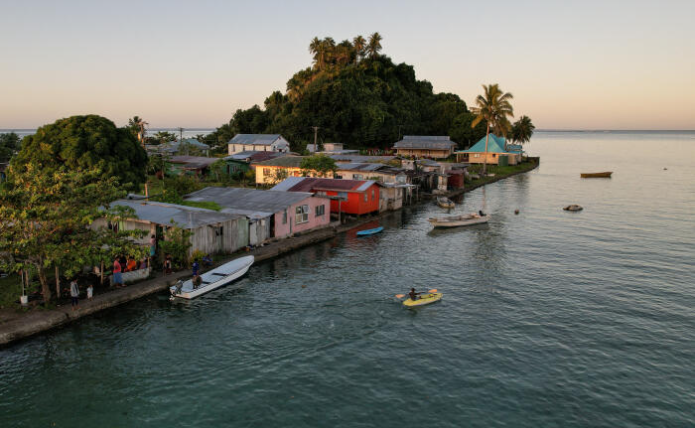Maritime transport of goods is by far the mode of transport that emits the least GHGs per tonne of goods transported over one kilometer. However, this does not prevent the maritime transport industry from constantly seeking to perform better environmentally. It is in this spirit and with this objective that Green Marine was created in 2007, a certification body for the North American maritime industry aimed at surpassing environmental regulations.
For this purpose, Green Marine brings together shipowners, ports, terminals, shipyards and Seaway corporations based in Canada and the United States. But it is with an inclusive vision of environmental groups and other stakeholders that the organization was set up in 2007, in the context of the crisis of zebra mussels introduced into the ecosystem of the St. Lawrence and the Great Lakes via ballast water from ships.
“At the time, there were environmental groups on one side, industry on the other, especially on the issue of invasive aquatic species, and that wasn’t talked about much,” says David Bolduc, president of the Green Alliance. “So the goal of Green Marine was to bring everyone together, with a view to working to improve the environmental performance of the industry. From the start, in order to establish our credibility, we invited environmental groups, scientists and governments to join in the creation of the Alliance. How we put together the program, what the criteria will be, how we evaluate performance, they were around the table with us to put it all in place. »
The Alliance has therefore set up a certification program for partner companies and organizations, to clearly quantify the progress made. Specific or common performance indicators for the different actors have been established. From underwater noise to greenhouse gas emissions, including the control of invasive aquatic species and the management of residual materials, everything is transparently scrutinized to certify partners. Participants’ progress is assessed annually, on a scale of 1 to 5, with performance indicators that exceed standards and regulations. And all of this, completely accessible on the Alliance website.
“This is what also sets us apart as a certification body,” emphasizes David Bolduc. “Everyone can go to our website and consult the criteria and the performance of each company on each environmental issue. »
Involved from the beginnings of the Green Alliance, David Bolduc notes a renewed interest in improving the environmental rating of the maritime transport industry. According to him, the environment has become an increasingly important priority over the years.
“I’ve been working on these issues for 15 years, and at the beginning, we felt a bit missionary. But we were part of this movement, which changed mentalities over the years, so that it took on more and more space, so that there were firm commitments to improve. And obviously, there is external pressure, we see all the climate changes underway. Regulations are increasingly demanding, and even at the international level, there is a global organization, the International Maritime Organization, which determines the regulatory framework for various things, including environmental standards. And these standards are being strengthened. »
In 2019, Green Marine collaborated with Surfrider Foundation Europe to export the environmental certification program to France, which gave birth to Green Marine Europe in 2020. The European environmental certification program operates under the same model that proven here in North America.
The challenge of alternative fuels
Among the issues affecting the entire industry, the use of new fuels or new energy sources occupies a large place. However, with regard to ship motorization, this energy transition will take time, David Bolduc tells us.
“Ships consume very large quantities of fuel. And these are long-term investments. When you buy a ship, it can last several decades. There are issues of workforce training, safety, approval of new systems, the supply chain must be there too. This is a major issue for all alternative fuel sectors, such as liquefied natural gas or hydrogen. LNG is ahead of the others, but we are obviously still using fossil fuels. »
An interesting avenue for reducing these emissions is supplying ships at dock with hydroelectricity, which would reduce the need to use ships’ engines and generators to meet their energy needs when they are in port. Projects in this direction are in the implementation phase, notably at the Port of Montreal where a supply ship, the Juno Marie, connects to a 600 V/200 A power supply when it is stopped.
“But the technical challenges are also major,” underlines David Bolduc. “When there’s a cruise ship with 2,000 people arriving, it’s a real little floating city. It takes installations that are ready, an electricity network that is ready. It’s not just the port that is involved, it’s the city around it, it’s Hydro-Québec, these are significant investments. Another very important issue is standardization in terms of electrical current, connectors, etc. »
For now, the electrification of port facilities is progressing where ships are smaller and have limited distance operations, such as ferries.
Green maritime corridor
Last December, the federal government established a new funding and support program for environmental initiatives for the maritime industry, the green maritime corridors program. This program, with a budget of $165.4 million, aims to support the adoption of clean technologies and infrastructure in ports and terminals, as well as the development of ships running on green hydrogen or advanced biofuels.
Already, a first green maritime corridor has been announced between the ports of Montreal and Antwerp in Belgium. The Port of Montreal is also working in collaboration with Oceanex and QSL to create a first green maritime corridor between Montreal and Saint-Jean-Newfoundland.
In the Great Lakes, the port of Hamilton is positioning itself to supply biodiesel for companies like Canada Steamship Lines.
“As in all other projects, there are supply issues, the CSL did it, would we have the capacity for all companies to use biodiesel? At the moment, no, the production is not there. But it’s a process, and it’s really important that the government supports these projects. Because the costs and risk are quite significant. Buying a new ship is an investment for a long time. If we equip it with an engine that uses an alternative fuel, that’s quite a risk that the company is taking. It is important that the government plays a role in encouraging innovation as quickly as possible. »
But even if it is a significant investment, the green maritime corridors program, it is a drop in the ocean in the approximately 11 billion dollars which will have been spent between 2018 and 2027 to improve maritime transport on the Great Lakes and the St. Lawrence Seaway, according to a survey carried out by the firm Martin Associates on behalf of numerous industry partners.
Protect the marine ecosystem
Beyond performance in terms of reducing emissions, Green Marine applauds the projects set up by several port management organizations, such as the Port of Sept-Îles and the Institute for Research in Environment and Occupational Health ( INREST), who deployed the first scientific buoy of the Enviro-Actions project on April 3, 2024. With two fixed stations, the devices installed will make it possible to obtain real-time data on the water quality of the bay of Sept-Îles and to issue alerts in the event of exceeding established thresholds in order to be able to act in preventive mode.
David Bolduc also highlights the Mars project opposite Rimouski, a marine acoustics research station with hydrophones. Four autonomous and connected hydrophone antennas make it possible to measure the ambient noise and the underwater acoustic signature of candidate vessels without them having to deviate significantly.
“Several Quebec shipowners are participating in this project. This is an underwater noise project, which establishes the acoustic signature of ships, in order to find ways to reduce the impact on marine mammals. »
The Alliance has its head office in Quebec, but has branches in Saint John, Newfoundland and Labrador, as well as in Seattle in the United States. The Green Marine website is very comprehensive. To find out more about the members of the Alliance, consult the performance score of participating companies and organizations, or to evaluate the opportunity for your company to obtain this certification, consult www.allianceverte.org.




